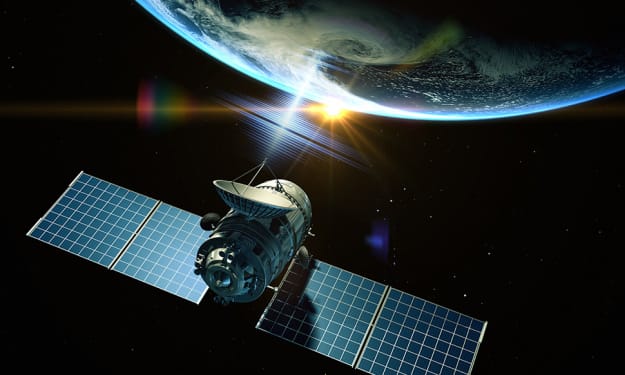
Every day, the sands of the Sahara Desert are scorched by temperatures that can soar up to a blistering 80 degrees Celsius. This sprawling desert, covering roughly nine million square kilometers, serves as a vast canvas upon which the Sun bestows an astonishing 22 million terawatt hours of energy annually. To put that in perspective, it's more than 100 times the energy consumed by humanity each year. It's a staggering amount of untapped power, and it begs the question: Could covering the Sahara with solar panels offer a definitive solution to our global energy woes?
Solar panels function by harnessing the energy of sunlight. When photons, the particles of light, strike the panel's surface with sufficient energy, they dislodge electrons from their stable orbits, setting off a chain reaction that generates electricity. However, there are limitations to the power solar panels can generate. These panels can only interact with specific wavelengths of light, rendering it impossible to convert over half of the sunlight they receive. Furthermore, many of the light particles that are convertible may simply bounce off the panels without ever striking an electron. Nevertheless, through the ingenuity of scientists and engineers, along with significant government investments, solar panel efficiency has soared. Anti-reflective coatings and surface patterns have expanded the opportunities for incoming light particles to strike electrons. Commercial solar panels have seen their efficiency increase from the low teens to 25%, while experimental models have reached an impressive 47%. What's more, solar power costs have plummeted by a remarkable 89% over the last decade, driven in part by the global supply chains shared with other technologies that use similar materials. All these factors have combined to make solar power the most cost-effective source of electricity on the planet.

Several countries, including India, China, Egypt, and the United States, have already harnessed the potential of these advanced panels in the desert, setting up massive solar farms ranging from 15 to 56 square kilometers. When the sun is high in the sky, these solar farms can provide energy for hundreds of thousands of local residents. However, these desert solar farms face a significant challenge – excessive heat. The unconverted or reflected light is absorbed as heat by the solar cells, which diminishes the panel's efficiency. Cooling systems are often employed, consuming substantial energy to maintain optimal temperatures. Even with these cooling mechanisms, solar panels in the desert still absorb more heat than the natural sandy environment. While this hasn't been a problem at the scale of existing solar farms, attempting to blanket the entire Sahara with panels could have profound consequences on the region's climate. The construction of such colossal solar farms disrupts local ecosystems and could radically alter the desert landscape.
Fortunately, solar panels aren't the sole solution. Some of the largest solar plants in the world are exploring an alternative approach: giant mirrors. For example, Morocco's Noor Power Plant, which is slated to cover approximately 30 square kilometers of the Sahara, adopts a concentrated solar power plant design. These mirrors reflect sunlight onto a receiver, converting it into heat, and subsequently electricity. While these mirrors still generate temperature shifts that can pose dangers to local wildlife, they have less potential to transform the landscape. Moreover, the materials being heated take time to cool off, allowing these plants to continue producing electricity even after the sun has set.

Whether employing panels or mirrors, industrial solar farms are relatively easy to integrate into existing energy infrastructure. However, the challenge lies in transmitting their electricity beyond local power grids, as this is a complex endeavor. Some countries are working on connecting electric grids across the globe, while many solar farms store excess energy in massive batteries or convert their electricity into clean gas for later use. Nevertheless, these techniques are currently prohibitively expensive and inefficient to rely on. Additionally, industrial renewables, much like fossil fuels, can be linked to destructive mining operations and carbon-emitting global supply chains.
Nonetheless, solar energy offers a spectrum of possibilities, ranging from large-scale industrial solar farms to smaller installations that can power individual buildings and remote communities. These projects can either supplement existing energy sources or serve as passive energy providers for off-grid regions. The simplicity of solar panels, built from a few basic components, makes them quick to install and relatively easy to upgrade. This very adaptability has been a key factor in the remarkable cost reductions and widespread adoption of solar energy over the past decade. To address our ever-increasing global energy demands, we must explore solutions that encompass both large-scale initiatives and smaller, more localized projects. Solar power, with its potential to harness the abundant energy of the Sun, will undoubtedly play a central role in our quest for a sustainable energy future.
About the Creator
Betty-Ann
I am grateful for the small things in life and would like to share what I can with others.
Reader insights
Nice work
Very well written. Keep up the good work!
Top insight
Expert insights and opinions
Arguments were carefully researched and presented






Comments (1)
A very good question, which seems obvious in its usefulness, so one wonders what politics could be behind the lack of action on this idea. Excellent article with some great insights.